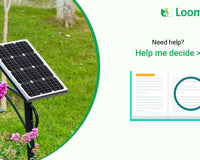Bifacial solar panels have the unique ability to capture sunlight from both the front and rear sides, which means they can potentially generate some electricity in shaded conditions better than traditional monofacial solar panels. If there is reflected or diffused light available, they might produce a small amount of energy in the shade due to their rear-side sensitivity. However, their performance in shade is still significantly reduced compared to direct sunlight.
While bifacial solar panels are more shade-tolerant than monocrystalline solar panels, they are not a substitute for direct sunlight. To maximize their efficiency, it's still important to place bifacial solar panels in locations with minimal shading and good sunlight exposure.
Here are the benefits of Bifacial Solar Panels:
- Increased energy production
- Improved efficiency
- Enhanced performance in high-albedo environments
- Flexible installation options
- Long-term cost savings
- Durability and weather resistance
- Aesthetic appeal
- Ongoing technology advancements
Conclusion
Bifacial solar panels are superior due to their dual-sided light absorption, resulting in increased efficiency and energy production. They offer durability, flexible installation options, and aesthetic appeal, making them a compelling choice for solar projects. Advancements in technology and cost-effectiveness further enhance their position as a top solar panel choice.












